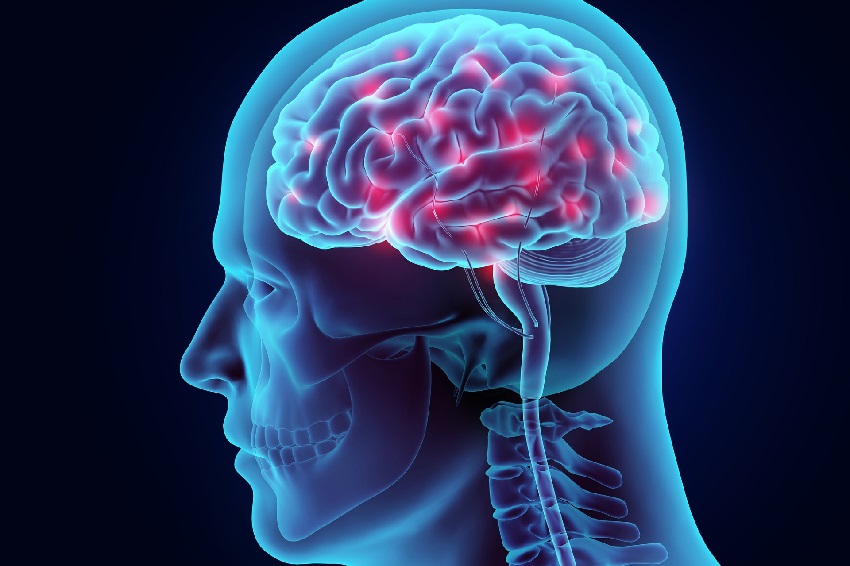Delirium, also called acute confusional syndrome, is the term used to define the organic disorders of higher mental functions. Its main characteristic is an acute and transient alteration of consciousness and cognitive abilities. It should not be confused with delirium since they are different conditions.
The majority of cases occur during the third age; However, anyone can develop it as a result of alcoholism, substance abuse, chronic diseases or changes in metabolic balance.
Although it is a reversible disorder, its lack of diagnosis and timely treatment can lead to serious consequences. Therefore, it is essential to learn to recognize your symptoms and learn about available treatments.
Causes of delirium or acute confusional syndrome
Delirium can be a primary brain disorder, but it can also originate as a symptom or complication of other serious diseases. Its appearance depends on the interaction of multiple risk factors. However, it can not be established how many of these factors must be present for it to develop. The most common are:
- Metabolic diseases
- Cardiovascular and circulatory disorders
- Infections that affect the nervous system
- Neurological or neurodegenerative pathologies
- Abstinence syndrome
- Poisoning or exposure to substances such as methanol, lead or carbon monoxide
- Cranioencephalic traumatisms
- Brain tumors
- Multiple sclerosis
- Abuse of drugs or drugs that cause dependence
Continue reading:Disorders due to amphetamine use
Symptoms of delirium
Delirium is a syndrome that can appear suddenly or gradually. Some cases are given in a matter of hours, while others are noticed with the days. In general, the symptoms are intermittent during the day; in some patients, they get worse at nightfall. To be more specific, its main clinical manifestations include:
- Inability to maintain concentration or lack of attention.
- Partial loss of memory, especially of things that have recently occurred.
- Inability to remember who they are or where they are.
- Hypersensitivity to visual and auditory stimuli.
- Inability to understand and process information.
- Difficulties to read or write.
- Alterations of the dream.
- See things that do not exist (hallucinations).
- Delirious ideas
- Talk nonsense
- A phenomenon of sundowning, that is, calm in the day and agitation at night.
- Emotional alterations.
Diagnosis
When a patient is suspected of having delirium, the health professional begins with a physical examination and an analysis of the symptoms. It also takes into account the medical history, as there may be a history of disorientation, confusing communication, among others.
Part of the diagnosis must be done by relatives or companions since they can provide important information about the behavior of the affected person. A cognitive test is also recommended at the first interview and an attention test.
If necessary, the doctor can suggest complementary tests to know the origin of the delirium. These include:
- Computerized Axial Tomography (CAT)
- Magnetic Resonance Imaging (MRI)
- Positron Emission Tomography (PET)
- Electroencephalogram (EEG)
Treatment for delirium
To make an adequate treatment against delirium it is essential to identify its underlying cause. For obvious reasons, both medications and therapies should be aimed at controlling the disease and brain deterioration.
When detonated by a mild condition, such as lack of rest or fever, it is only necessary to rest and use the recommended mediation. The patient should receive plenty of fluids and an optimal level of nutrients.
In case of any sign of complication, the attention must be immediate. Due to its complexity, it is essential to receive continuous professional reviews to use other treatment options if necessary. In all cases, the goal is to heal the body and calm the brain to reverse the problem.
Therefore, it is also essential to identify and avoid some drugs or drugs that indicate their development. If medications are essential to treat another disease, it is best to look for substitutes with similar mechanisms of action.
The support treatment includes a series of personalized activities whose purpose is to train the most vulnerable cognitive abilities. These work attention, memory, psychomotricity, guidance, daily habits, among others.
In these therapies, it helps a lot to have a peaceful and harmonious environment, away from excessive stimuli such as loud noises or bright lights. It is good to have familiar objects on hands such as family photos, clock or calendars.
We also recommend you to read this article:http://fitness7elements.com/esophageal-cancer-symptoms-diagnosis-and-treatment/







